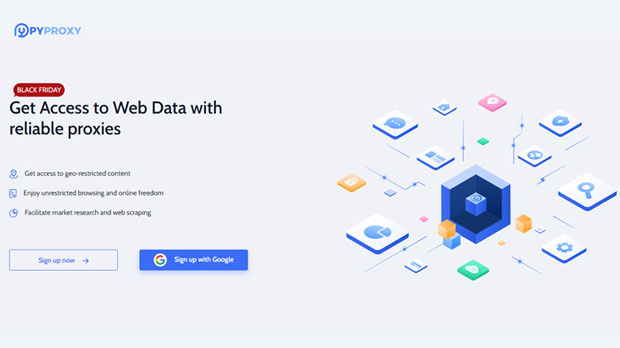In the world of online services, proxy servers are widely used to mask IP addresses, ensuring anonymity and bypassing geo-restrictions. Among these proxies, residential IP configurations, like those provided by PYPROXY, are often touted as more reliable and less likely to be blocked compared to traditional data center proxies. However, the question remains: is the Py proxy residential IP setup really as secure and resistant to blocking as it seems? In this article, we will analyze the effectiveness of PyProxy’s residential IP settings, the risks involved, and whether they are prone to being blocked by websites or services. This discussion will cover key factors such as IP reputation, traffic patterns, and the configuration process, giving a clear overview of what users can expect when using such proxies. What is a Residential ip proxy?Before diving into whether PyProxy’s residential IP configurations are easy to block, it’s essential to understand what a residential ip proxy is. A residential IP is an IP address assigned to a physical device by an Internet Service Provider (ISP). Unlike data center IPs, which are typically generated from data centers and can be easily detected and blocked, residential IPs are linked to real users and real locations, making them appear more legitimate. This legitimacy often makes residential proxies a preferred choice for users who need a more reliable and less detectable method for web scraping, browsing, and accessing geo-restricted content.PyProxy Residential IP Configuration: An OverviewPyProxy is a popular proxy service that offers residential IP configurations. These proxies are designed to rotate IPs at regular intervals, allowing users to access websites without revealing their original IP address. The PyProxy setup is generally considered robust, with features like IP masking, geolocation spoofing, and high anonymity levels. However, as with any proxy service, there are concerns regarding how well these residential IPs can withstand detection or blocking by websites.Factors Affecting the Likelihood of Getting BlockedThere are several key factors that determine whether residential IPs from PyProxy or similar services are at risk of being blocked:1. IP ReputationOne of the most significant factors affecting whether a residential IP is likely to be blocked is its reputation. Websites and services often maintain blacklists or use sophisticated methods to detect and block suspicious IPs. While residential IPs are typically associated with real users, they can still be flagged if they are involved in malicious activities, such as botting, scraping, or spamming.For example, if a PyProxy residential IP is used for mass data scraping or accessing multiple accounts in a short time, it may appear suspicious to a website’s anti-fraud systems. If an IP associated with PyProxy has been flagged by one site, it could lead to its inclusion in broader IP blacklists, making it harder for other users to access the same services.2. Traffic PatternsAnother critical factor influencing whether residential IPs get blocked is the traffic pattern associated with them. Websites and online services use algorithms to track user behavior and identify unusual patterns that may indicate automated bot traffic. Residential proxies, while often less detectable than data center proxies, are not immune to detection if they exhibit behavior that is typical of bots, such as high-frequency requests or accessing pages in rapid succession.To reduce the risk of detection, it’s crucial for users to configure their PyProxy residential IP setup in a way that mimics natural human traffic patterns. This involves using features like rate limiting, randomizing request intervals, and simulating realistic browsing behavior.3. Proxy Rotation and ManagementResidential ip proxies that rotate IPs frequently can reduce the chances of being detected and blocked. PyProxy’s residential IP service often includes rotating IPs, which means that a new IP address is assigned to the user at regular intervals. This can help spread traffic across multiple IPs, making it more difficult for websites to detect a pattern or associate multiple requests with a single user.However, while IP rotation can be effective, improper management of these rotations can still lead to blocking. If the rotation frequency is too high or the proxies are used for suspicious activities, websites may notice irregularities in traffic and block those IPs.4. Website Detection MechanismsModern websites employ various techniques to detect and block proxy traffic, including the use of CAPTCHA challenges, JavaScript-based fingerprinting, and advanced machine learning algorithms. Even residential IPs are not immune to these detection methods, especially if the website is sophisticated enough to identify behaviors typical of proxy traffic.PyProxy residential IPs might get blocked if the website detects multiple failed login attempts, high request rates, or if they share characteristics with known proxy servers. The more advanced the website’s detection mechanisms, the higher the likelihood that any proxy, including residential ones, could be flagged.Mitigating the Risk of Getting BlockedWhile residential IPs are generally more resistant to blocking, there are several strategies that users can employ to minimize the chances of being blocked:1. Slow Down and Mimic Human BehaviorTo avoid detection, it’s important to configure PyProxy’s residential IPs to simulate human browsing patterns. This can involve randomizing request intervals, reducing request frequency, and ensuring that user actions (such as logging in, clicking, or browsing) resemble those of a typical human user. This approach reduces the chances of triggering anti-bot systems.2. Use IP Rotation WiselyWhile rotating IPs is an essential feature, overusing it or rotating too frequently can lead to a higher likelihood of detection. By managing the rotation frequency and combining it with strategies like time-based delays or session persistence, users can ensure that they avoid patterns that might suggest automated behavior.3. Monitor Proxy HealthRegularly monitoring the performance and reputation of the residential IPs used by PyProxy is vital. If an IP gets flagged or blocked, it’s essential to replace it with a new one promptly to avoid service disruption. Many proxy services, including PyProxy, provide tools to track the health of their proxies and ensure they are not being flagged by websites.While residential IP configurations, such as those offered by PyProxy, are generally more secure and less likely to be blocked than traditional data center proxies, they are not immune to detection. The likelihood of a residential IP being blocked depends on several factors, including IP reputation, traffic patterns, and the sophistication of the website's detection mechanisms. By understanding these factors and employing best practices for managing proxies, users can mitigate the risks and continue using residential IPs effectively for their online activities.In summary, PyProxy’s residential IP configuration is a valuable tool for users looking to bypass geo-restrictions or maintain anonymity online. However, like any tool, it must be used correctly to avoid the risk of being blocked. By following the recommended strategies for managing traffic, rotating IPs, and mimicking human behavior, users can significantly reduce the chances of encountering issues with IP blocking.
Oct 21, 2025



































































